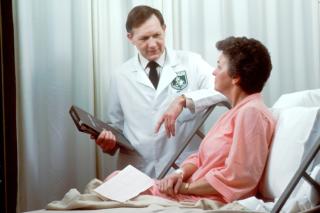
Healthcare Accessibility Is A Major Problem
What does accessibility mean when it comes to healthcare?
Most people assume that healthcare accessibility is synonymous with wheelchair mobility-friendly environments, supporting mobility equipment access and mobility-reduced patients.
In reality, there is more to accessibility than debating whether a mobility scooter could go through the front door of a healthcare center. Making healthcare accessible to patients starts with an important question: Why don’t people receive the health service they need?
Reduce unnecessary waiting time
Waiting times can make it impossible for some individuals to carry on with treatment. Imagine the following scenario.
Brenda W. makes an appointment with her family doctor to discuss recent health complaints. She needs to arrange her schedule to ensure she can attend the meeting, even though the family doctor is not far from her workplace. Unfortunately, the FD recommends a second appointment for a diagnosis using the ultrasound machine. For Brenda, it’s becoming increasingly difficult to balance her work and family time around multiple appointments. Yet, if her FD used portable equipment such as the GE vscan machine, Brenda could have already received a diagnosis after her first visit. The process would speed up, ensuring critical conditions can be spotted early, without extensive delay between appointments.
Reduce unnecessary travel
A diagnosis is not synonymous with medical treatment. More often than not, patients need to wait several days or weeks to get hold of their prescribed treatment. This can be the case when doctors provide a prescription without being able to offer comprehensive services. As a result, patients need to contact specialist providers for their medications and health accessories. The step requires not only additional administrative delays but also an extensive commute. Finding a local healthcare center is no guarantee that a patient will not need to travel elsewhere to collect their prescriptions. Teaming up with partner companies to provide prepared medications can save patients a lot of unnecessary hassle.
Reduce unnecessary confusion
Medical terms can be confusing. For example, you might have a common cold, but a doctor would refer to it as an upper respiratory tract infection. Suddenly, it feels a lot more serious. Similarly, explaining your symptoms to a doctor can also be delicate when you don’t know the medical jargon. That is why more and more doctors are using emojis to improve communication with their patients. Specific symptoms such as sleepiness could be shared easily through an emoji. Additionally, doctors can also help visualize the process.
Emojis can also be integral to managing mental health issues such as patients who experience high anxiety in a healthcare environment. Emojis can demystify the process, help track a patient’s mood, and enable individuals to express their emotions and thoughts.
In conclusion, one of the biggest challenges regarding healthcare remains accessibility. Communication issues, lack of on-the-fly diagnosis equipment, and the absence of a comprehensive offer can make healthcare treatments unmanageable for patients. Therefore, we want to ask the fundamental question: What is the point of developing healthcare services that do not improve patients’ lives but increase stress instead?






